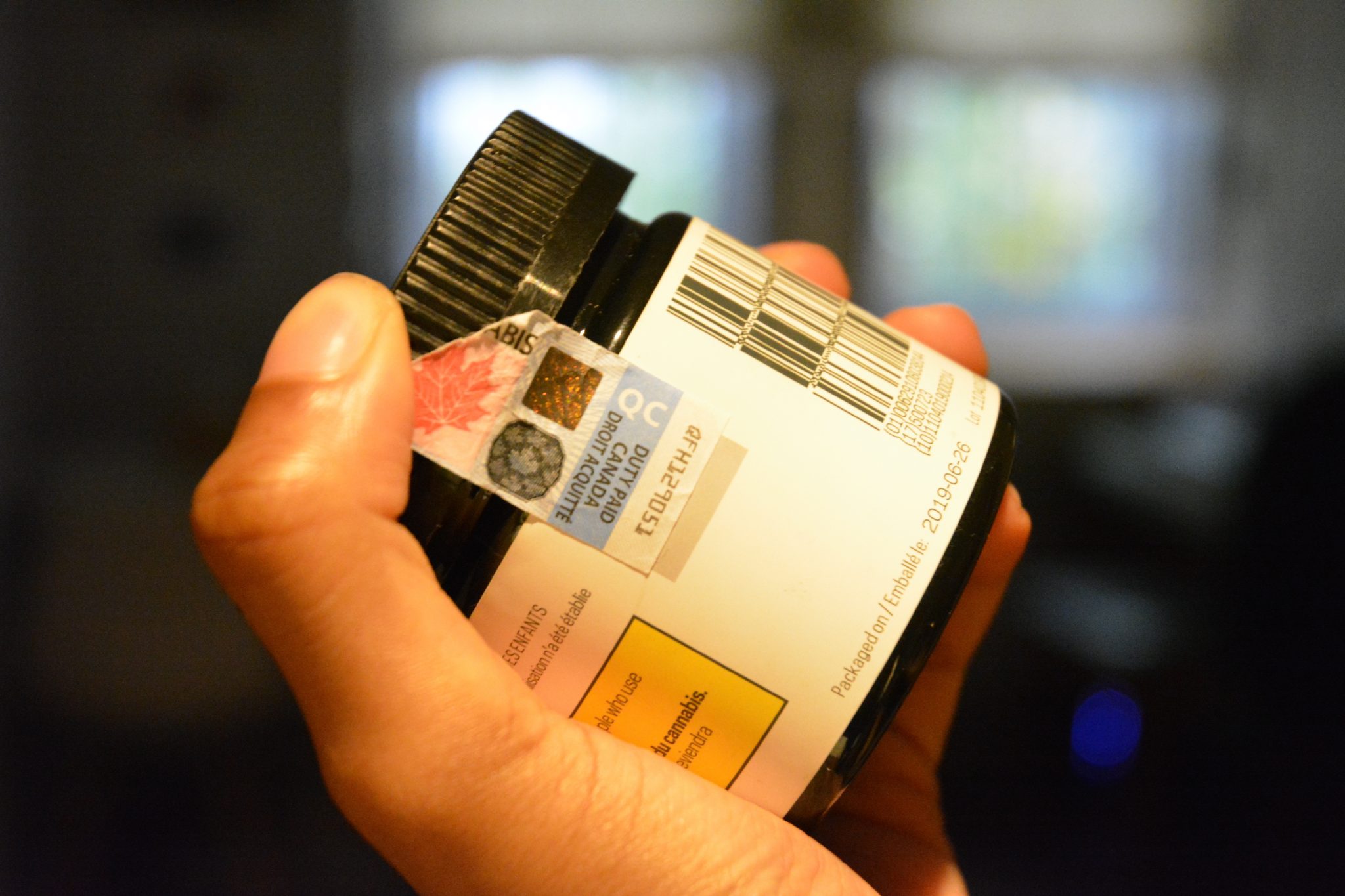After years of prohibition, cannabis was legalized in Canada for recreational use on October 17, 2018, under the Cannabis Act.
Canada is the second country in the world to legalize recreational cannabis after Uruguay. So, how does a country change after cannabis legalization?
Read on for all the tea.

Table of Contents
What’s It Like Living in Canada After Cannabis Legalization?
Talks of legalization have been in and out of the Canadian parliament for years; it seemed as if it would never happen.
Now that government officials have changed their views on cannabis and have legalized the plant, did much change for Canadian citizens?
As a Canadian citizen, here are some anecdotes from my experience.
Cannabis Laws are Different Everywhere
Even though marijuana is legal throughout the country, each province has
Much like Canada’s alcohol laws, the age for legal use differs between 18 for Quebec and Alberta, and 19 for the rest of the country.
Other things are also different across provinces. For example, there are a number of provinces where you can purchase cannabis through private retailers, but that’s not the case for the entire country.
Canada’s legalization got my mom to try cannabis! Read about the experience here.
Home cultivation is only allowed for some provinces, and the amount you can possess in your home also differs from province to province.
As it stands, laws are still working themselves out as the country gets
Still Getting Used to Being Open About Marijuana After Cannabis Legalization
Even though it’s legal to smoke weed throughout the country, it sure as hell doesn’t feel that way.
Many cannabis users still feel the need to hide their sessions, stash or tools out of sight. That being said, when users remember that it’s legal there’s definitely a weight lifted.
While it’s mostly out of habit, there are still some people who don’t condone the use of marijuana (and will let you know it), so some users will still keep their usage discreet.
Cannabis Legalization Doesn’t Exactly Mean “Free-Use”
While you can light up a joint outside with no problems in most parts of the country now, there are still people who aren’t pleased with legalization and cannabis users as a whole.
Some of these people happen to be landlords. After legalization, a number of landlords throughout the country made sure to let their tenants know that weed would not be allowed on the property regardless of new laws.
Some provinces, like Quebec, have harder rules and limit where you can openly smoke marijuana. This even varies in different boroughs of major cities. Do they enforce this? Who knows.

What’s It Like Buying Weed in Canada After Cannabis Legalization?
Since each province has its own set of rules on where cannabis can be purchased, buying weed differs depending on where you are.
Where Do You Go to Buy Weed in Canada?
Most provinces have their own government-run cannabis outlets, and for some provinces, this is the only place where you’re allowed to purchase weed.
Provinces like British Colombia and Newfoundland-Labrador allow private outlets. For provinces like these, you’ll have more options on where to go to purchase cannabis.
Is It Easier to Buy Weed in Canada After Cannabis Legalization?
Of course, recreational cannabis users were enthusiastic about being able to legally buy recreational weed.
For a lot of users this meant no more hanging out in shady parks, seedy buildings, or spending time in sketchy company to get cannabis.
While legalization ensured that you wouldn’t be committing a criminal offence, it still didn’t make getting cannabis entirely easy-breezy for consumers either.
Some issues arose that actually made cannabis harder to get for some consumers. And these are kinks the government is still trying to figure out.

What Marijuana Products are Available in Canada?
While this article is being written, only dried cannabis and oils are legally available at most Canadian dispensaries.
Edibles haven’t been approved for sale in the country, though you can make your own with dried cannabis.
Not about having smoke in your lungs? Click here for other ways to use cannabis without smoking.
The Issues That Came with Cannabis Legalization
Lack of Outlets
While the government promised retail locations for many provinces, the actual amount of stores that opened were far from the number they needed to supply consumers.
For example, Quebec opened up a small number of scattered stores throughout the province causing long line-ups during the first few months of legalization.
On the other hand, Ontario would only be selling their cannabis products through their online store.
This led to a lot of frustration for consumers living in provinces where you’re only allowed to purchase through government stores. This grew even more frustrating thanks to Canada’s mail service.

Delivery Delays
Most provinces have online outlets where you can purchase cannabis products.
While this helps get
The nation-wide Canada Post Strike of 2018 hit during cannabis legalization. This was bad news for patients and recreational users who purchased their first legal marijuana order.
For customers of the Ontario Cannabis Retail Store, this meant waiting weeks for their order to arrive, resulting in a ton of disgruntled and confused users.
For others, who didn’t have to order online, there were other things to worry about.
The Canada-Wide Cannabis Shortage
Canadians are known for their love of herb, but it turns out the government may have not gotten that memo. Lack of supply was a huge issue to tackle upon legalization.
When legalization hit, there were a number of outlets that reported shortages in various provinces from coast to coast.
So, not only did Canadian citizens wait in line forever to get weed, but many of them faced a near-empty store upon entry.
This lack of supply led to some adjustments in the way things were handled. Dispensaries in Quebec were forced to minimize opening hours, while Ontario limited the number of retail licenses to 25.
Packaging Problems
This was a confusing problem, mostly for consumers and those who pride themselves on living green.
While most marijuana users are accustomed to having their flower in small smell-proof ziplock bags, the packages being sold at legal dispensaries usually had a ton of plastic packaging to go through.
While the packaging seems to have been an attempt to protect minors from the product, for a “green” industry, most citizens and users think the packaging from legal outlets is overkill.
Quality Issues
This leads me to another reason some users stay clear of the legal market; quality concerns. Stories continue to emerge of bad experiences from legal Canadian dispensaries.
A friend of The High Blog mentioned they couldn’t get through a pre-roll from a legal dispensary, while other consumers mentioned being shorted on their purchase.
On top of these last two woes, government-run dispensaries also offer their products at a higher price than the black market or private run dispensaries which is also deterring.
Cannabis Legalization Grey Areas in Canada
The issues above are just some of the reasons many cannabis users in Canada feel forced to forgo legal outlets.
While one of the main reasons for legalization was to lead users away from the black market, it may be a while before we see that fully happen.
This brings me to the country’s grey areas. Since we’re clearly still trying to figure this legalization thing out, there are a number of rules, laws, and regulations that fall into Canada’s post-legalization grey areas.
Are Private Weed Dealers Legal in Canada?
I’ve mentioned that due to the issues with cannabis legalization in Canada, some users try to avoid the legal market for the reasons listed above.
So does that mean they’re able to go back to their regular dealer without consequence?
While private marijuana sales are allowed in some provinces, that’s not the case for all.

To Pack This Up
Cannabis legalization is still a work-in-progress in Canada, with some laws and operational rules still being tweaked.
Most of us are pretty much confused on what most of these rules mean. We’re also confused on if they’ll change, when they’ll change, and how things will end up post-legalization.
This also includes the matter of those incarcerated for marijuana related incidents.
One thing’s for sure, it’ll be interesting to see the progress of cannabis in Canada after legalization.
That’s what it’s like living in a cannabis legal country for now! Is there anything you want to know? Ask below!




